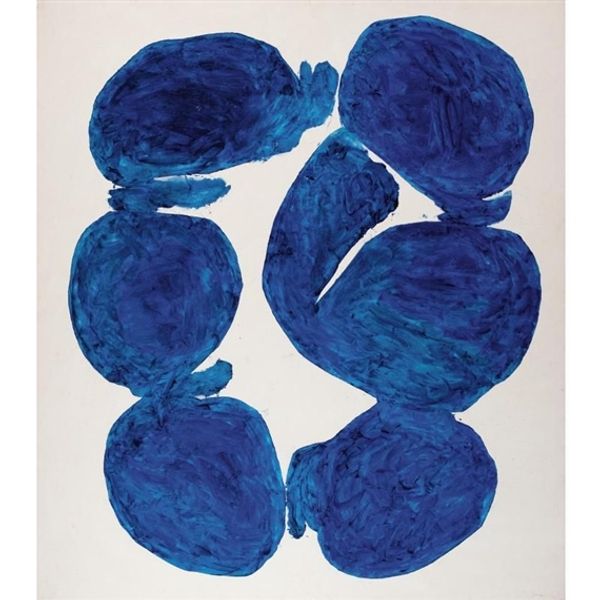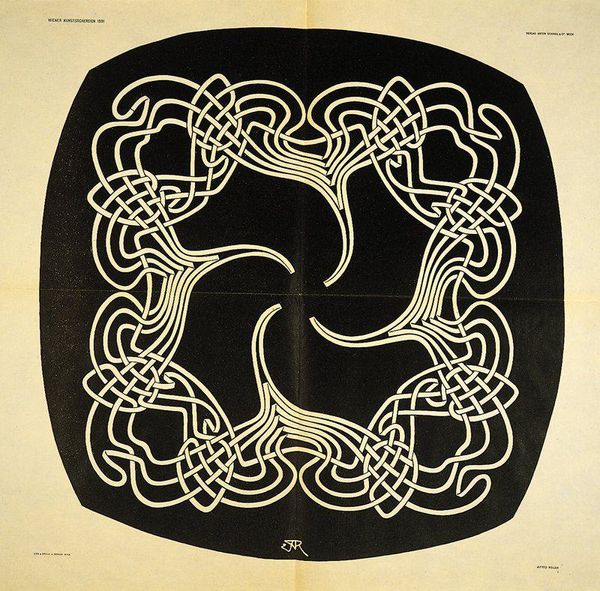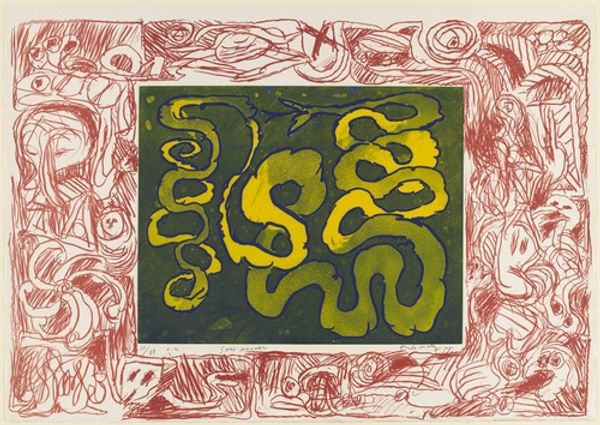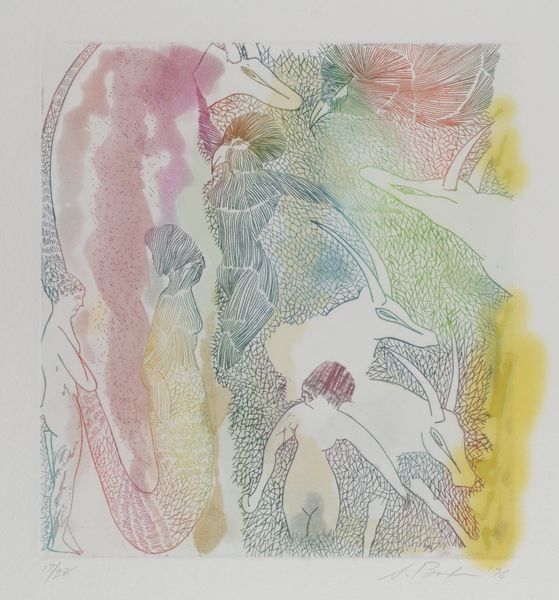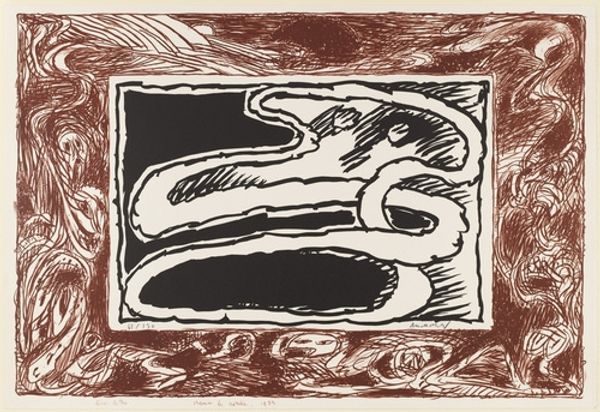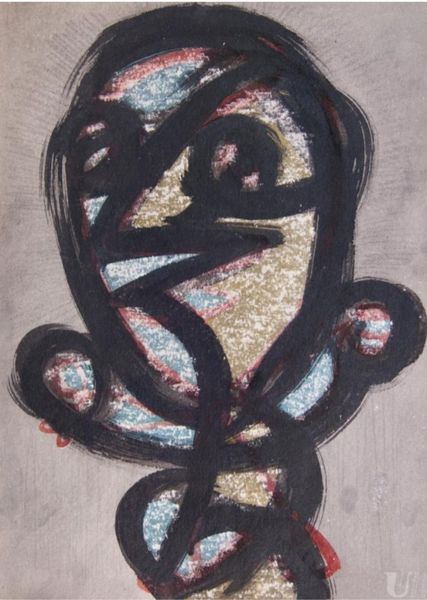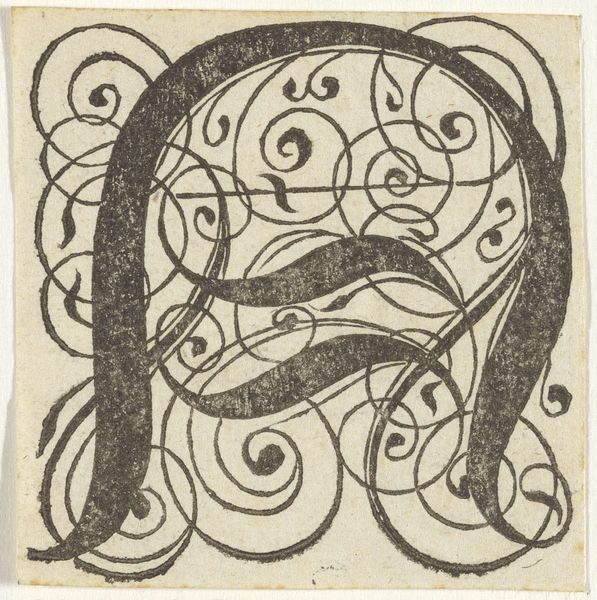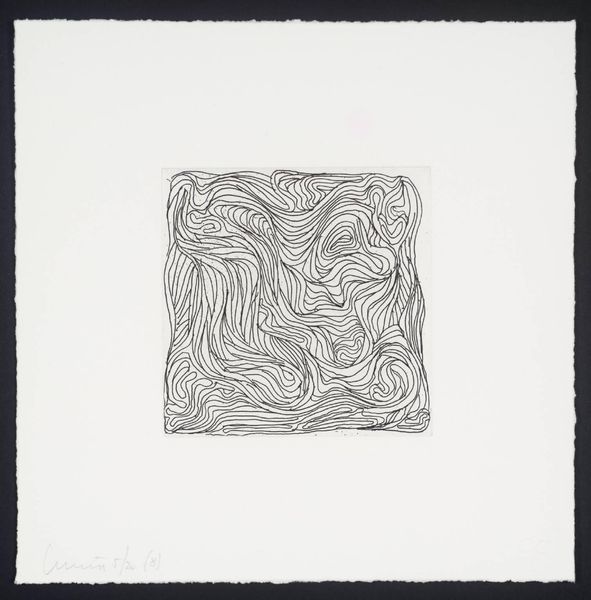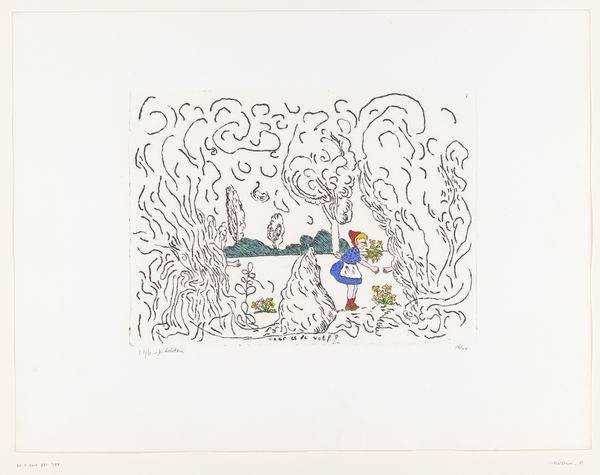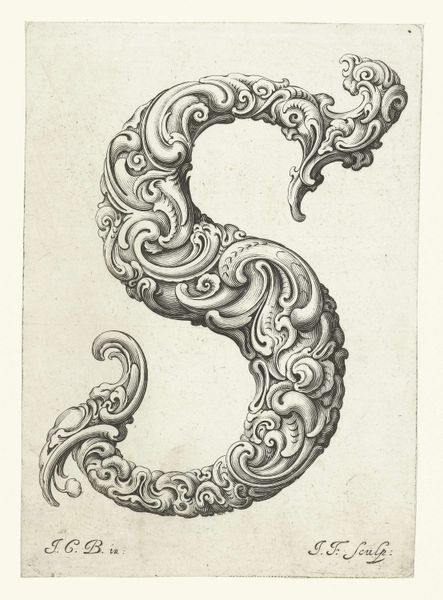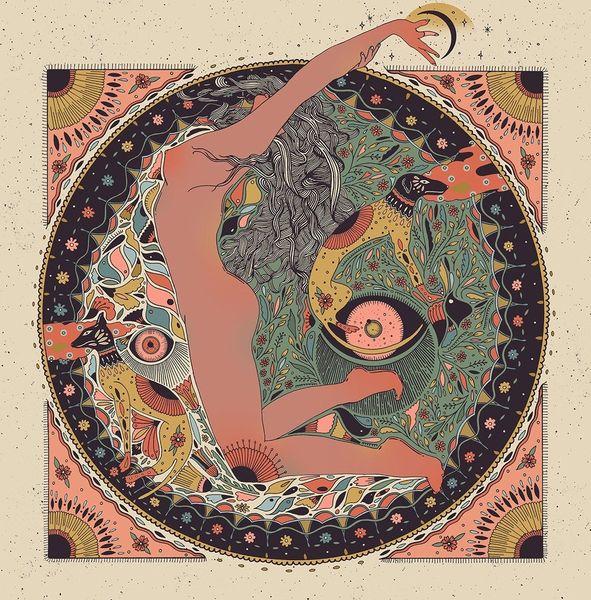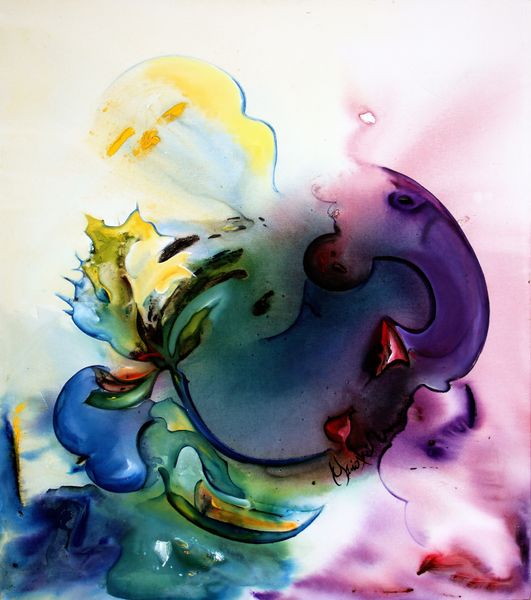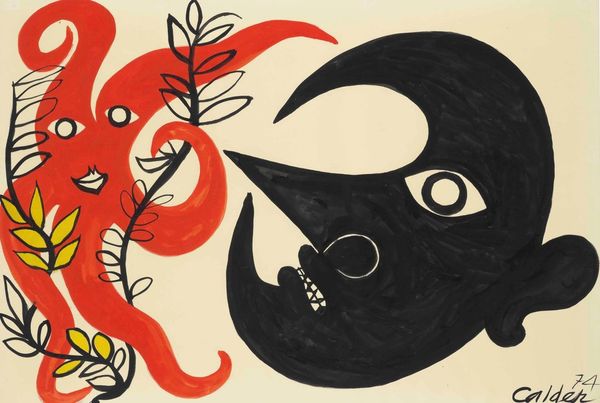
Dimensions: image: 650 x 502 mm
Copyright: © Sevenarts Ltd. All Rights Reserved, DACS 2014 | CC-BY-NC-ND 4.0 DEED, Photo: Tate
Curator: Erté’s "Number Three," held in the Tate Collections, immediately strikes me with its playful Art Deco elegance. The sinuous lines and the stylized figures feel both modern and timeless. Editor: It's undeniably eye-catching. It presents as decorative, but I can't ignore the implied narrative here, particularly around the female form being so abstracted and essentialized. How does this work, created by a man, fit into larger conversations about the representation of women in art and popular culture of that time? Curator: Erté’s images were widely disseminated through magazines like Harper’s Bazaar. They shaped perceptions of femininity, undeniably. Yet, his work also celebrated the power and artistry of costume and performance, allowing for a kind of self-fashioning that was, in its way, subversive. Editor: That's a valid point. The performative aspect offers a glimpse into the complexities of identity. I’m left considering how "Number Three" participates in the broader discourse of gender, representation, and the evolving role of women in the early 20th century. Curator: Ultimately, it shows us that even a seemingly simple image can hold multifaceted meanings. Editor: Absolutely. It invites us to consider art's role in shaping, and reflecting, societal attitudes.
